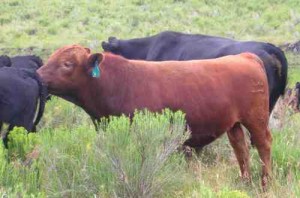Article by John Orr
Water – August 2007 – Colorado Central Magazine
Arkansas River Basin Roundtable
The July meeting of the Arkansas River Basin Roundtable was held in Poncha Springs. The meeting, normally held in Pueblo, was moved to increase attendance from and better represent the upper basin. The Colorado Water for the 21st Century Act set up roundtables for each of the major river basins in Colorado (with one extra for the Metro Denver area).
Recreation was the big focus for the meeting along with an emphasis on the environmental aspects of non-consumptive uses. The Colorado Division of Wildlife’s Dave Krieger emphasized the economic benefits of healthy fisheries. He told attendees that storage projects should include plans for fisherman and fish. According to DOW statistics out of state fisherman spend an average of $141 per day while in-state fisherman spend about $17. Since most of the fishing occurs on flat water venues (70%) it makes sense to maximize shorelines, water depth, fish health and access from the outset.
Attendees were treated to an analysis of the Voluntary Flow Management Program. The program manages stream flow between Twin Lakes and Pueblo Reservoir with an eye towards maintaining a healthy fishery and flows for the recreational boating business in the Upper Arkansas Valley. The program should have no lack of water this year as Reclamation has moved 53,400 acre feet from the Fryingpan. The draining of Clear Creek Reservoir is also adding about 50 cfs to flows.
The roundtable, along with others across the state, are looking at ways to quantify the non-consumptive water requirement needs. That work is scheduled to be completed in 2008.
Rio Grande Basin Roundtable
The Rio Grande Basin Roundtable has moved requests forward for three projects.
First, a request for $87,500 for flood control on the Conejos River, Romero, and Guadalupe ditches. The project is designed to help protect the town of Guadalupe from flooding while helping the Conejos River in meeting its commitments under the Rio Grande Compact. Total cost of the project is $172,300, with both ditch companies and the Natural Resources Conservation Service pitching in on expenses.
Second is a request for $1.5 million from the Rio Grande Headwaters Land Trust for acquiring conservation easements as a protective measure for the river. Proponents are hoping to attract approximately 25,000 acres in voluntary (willing buyer and willing seller) conservation easements.
Third is a request for $104,000 to stabilize the Alamosa River. The work will involve restoring natural meanders in the river along with stabilizing riverbanks, reestablishing vegetation and removing sediment.
Preferred Storage Options Plan
The Preferred Storage Options Plan (PSOP) is in the news. Proponents hope to expand storage in Turquoise Lake and Pueblo Reservoir and find ways to use the Fryingpan-Arkansas project reservoirs to store non- project water. There are competing bills (U.S. Representative John Salazar and U.S. Representative Doug Lamborn) in the U.S. House of Representatives for implementation.
U.S. Senator Ken Salazar proposed a compromise hoping to study the logistics of building more storage without the intergovernmental agreements (IGA), that would detail how the extra storage would be used, attached to the legislation. He’s also pushing to include in the study the possibility of a new dam on Fountain Creek for flood control and reuse. Chris Treece (Colorado River Water Conservation District) wants to make sure that the study includes compensating the basin of origin. This consideration was part of the IGA.
Other entities are moving ahead, not planning for PSOP at all. Some are signing long-term excess capacity contracts (Aurora, Colorado Springs, Pueblo). Pueblo may expand Clear Creek Reservoir as an alternative to the 5,000 acre-feet it hoped to get in Pueblo Reservoir.
The Southeastern Colorado Water Conservancy District has decided to shelve discussions of PSOP until next year. Southeastern hopes that they’ll be able to find solutions to other water problems and avoid the confrontation around PSOP.
The Bureau of Reclamation’s position on PSOP is basically wait and see. If the public comes to consensus on what legislation should look like and the legislation passes Congress, they’ll do what they are directed to do.
Surface vs. ground water users
The effects on surface owners from irrigators pumping groundwater is becoming a big issue across Colorado. Last year a group of surface water owners formed the San Antonio, Los Pinos and Conejos River Acequia Preservation Association with an eye towards protecting their surface rights. Their attorney, Tim Buchanan, sent a letter to former State Engineer Hal Simpson, asking that groundwater wells be regulated according to the priority doctrine (first in time, first in right). They’re hoping the state engineer will shut down wells that do not have augmentation plans that include wet water. The Conejos River surface rights owners have not taken action before hoping that the Closed Basin Project, delivering ground water from the northern part of the San Luis Valley to the Rio Grande River, would be able to meet the obligations under the Rio Grande compact. Surface owners have had to shut down ditches, even though they have priority over the groundwater irrigators, to meet the demands of the compact.
The legislature passed SB07-220 this year enabling the establishment of groundwater sub-districts. The hope is that, properly managed, the sub-districts will reduce injury to senior rights holders. Former State Engineer, Hal Simpson, is hoping that the sub-districts will obviate the need for the state to shut down wells in the valley.
Short Takes
* Folks around the San Luis Valley are celebrating 100 years of San Luis Valley Reservoirs this summer. This year was chosen because in 1907 the federal government lifted an embargo on storage in the valley.
* Congratulations to the San Luis Valley Ecosystem Council for winning a $100,000 grant from the EPA to limit residential exposure to contaminants such as metals and fertilizer from household wells.
* Kudos to the Colorado Division of Wildlife for a rule change that has led to larger trout in the Rio Grande River. For example, a survey at the Coller station between South Fork and Creede showed 67 pounds of fish per acre with 24 fish larger than 14 inches, double the count taken in 1997.
* The Division of Wildlife also recently acquired a perpetual easement on the Arkansas River known as the Hardeman property. The money for the land came from Colorado Habitat Stamp sales. The land is on both sides of the river just upstream from the Granite State Wildlife Area midway between Buena Vista and Leadville.
* Nestle foods is looking at buying the Hagen Springs, near Nathrop, for use in their bottled water (Arrowhead).
* You have to love the tenacity of Dave Miller and his dream for the proposed Union Park Reservoir near Taylor Park Reservoir. He was up in Northeastern Colorado recently pitching the project as a solution for groundwater irrigators who have been shut down. Mr. Miller’s plan suffers from a lack of water rights and little support from the courts and water utilities across the state.
* The Upper Arkansas Water Conservancy District has approved a new fee schedule for augmenting wells. The new fees go into effect on October 1st.
* Cheeseman Reservoir opened for fishing on June 20th. Access to the lake had been curtailed due to problems from the Hayman fire in 2002.
* Fees have increased for Individual Sewage Disposal Systems (ISDS). The $23 increase is earmarked to fund an employee for the Water Quality Control Division. Duties include: evaluating and certifying new technology; fostering consistency in ISDS guidelines and local regulations; overseeing new policies for technology, system-sizing, management strategies and monitoring.
* Although Blue Mesa Reservoir will not fill and spill this year the reservoir has received an unanticipated 37,000 acre feet. This is good news for irrigators and for the critters living in Black Canyon of the Gunnison National Park.
* Geothermal potential around Mount Princeton is attracting attention from the Department of Energy. Geothermal is estimated at 50,000 times the world’s oil and natural gas reserves.
* A Colorado Department of Public Health and Environment geologist has concluded that there may be groundwater pollution near the Cotter Mill impoundments in Canon City, but its impact is very limited.
* Congratulations to the San Isabel Ranch in the Wet Mountain Valley for winning the Aldo Leopold Memorial Award for their conservation efforts.
* The U.S. Fish and Wildlife Service decided against listing the Colorado River Cutthoat Trout as endangered.
* The EPA has relaxed their rules on mine cleanups in an effort to remove some of the downside to “Good Samaritan” efforts at cleaning up old orphaned mine sites. The new rules do not protect against lawsuits brought under the Clean Water Act.
* With oil and gas development heating up in the San Luis Valley, farmers, ranchers and others dependent on groundwater will be glad to know that the District 7 water court ruled that groundwater produced to free up methane, in coalbed methane wells, should be governed by Colorado water law.
* In other oil and gas news the Colorado State Supreme court has ruled that counties may regulate operations as long as the county regulations do not conflict with the Colorado Oil and Gas Conservation Commission rules.
* The Bureau of Reclamation has decided on a “preferred alternative” for managing the Colorado River in drought. It’s basically the plan submitted by the seven states that are party to the Colorado River Compact. A final plan is due in the fall.
* The Bald Eagle was removed from the endangered species list in July. Although the Bald Eagle never left Central Colorado its survival was in doubt for a time across the nation. Welcome back.
* Here’s an interesting note: Only 22 percent of Coloradans depend on groundwater for domestic needs compared with 90 percent in New Mexico and 96 percent in Idaho. Its great to be at the top of the hill.
Please send links and story ideas to jworr [AT] operamail [DOT] com.
John Orr blogs about Colorado water issues at coyotegulch.



